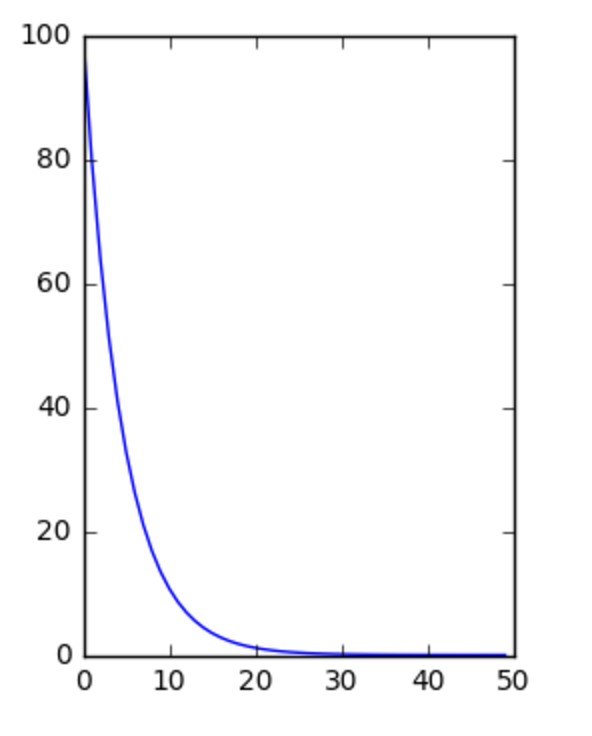Note on what do to verify tensorflow function exponential decay
I guess I am a little weird on the thing about learning. Exponential decay is a very small function of Tensorflow. Nobody will spend time making tensorflow programs just for this function. I did. Even though it is a small program but it also helps me understand a lot of insight into the tensorflow usage.
First let’s see the code: (This code is best to run at an ipython notebook)
import tensorflow as tf
import numpy
import matplotlib.pyplot as plt
learning_rates = []
initial_rate = 100.0
step_to_decay = 1
decay_rate = 0.8
with tf.Session() as sess:
global_step = tf.placeholder(tf.int32, shape=[])
learning_rate = tf.train.exponential_decay(initial_rate, global_step, step_to_decay, decay_rate)
tf.global_variables_initalizer().run()
for step in range(training_steps):
learning_rate.append(learning_rate.eval(feed_dict={global_step: step}))
fig, ax1 = plt.subplot(1, 1)
fig.set_size_inches(10, 4)
ax1.plot(range(0, training_steps), learning_rates)
plt.show()
The result:

The decaying learning rate
The take aways from this little program for me are:
- Tensorflow programs can be as small as this is
- We don’t really need
tf.Graph().as_default() - All the batched input use the placeholder
- If your variable is a pure scalar, just use shape=[]
- The global_step in the
tf.train.exponential_decayargument is for keep informing the current progress of training steps - The tensors
learning_rateis running by calling theeval()function - Plot can be fun